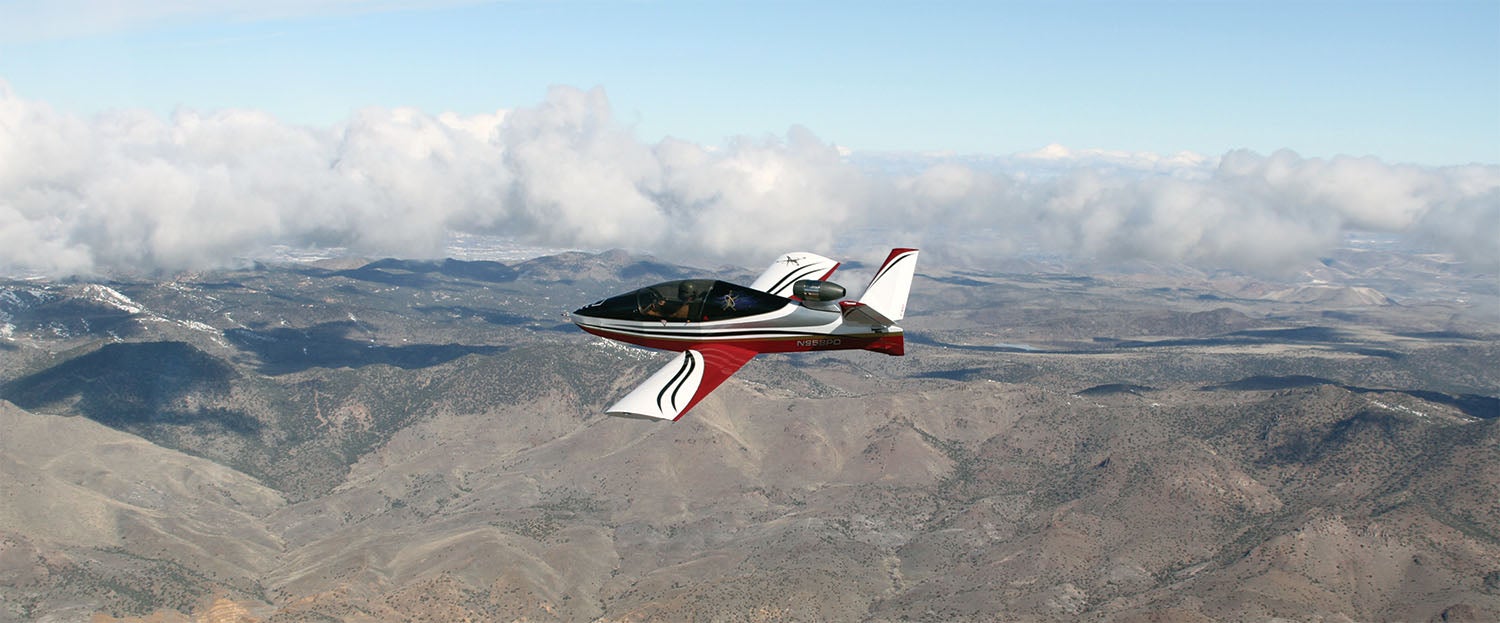
 There comes a day in every airplane build where there is nothing left to do but fill it with fuel, get in and take it aloft. But between the time when you have turned the last bolt and applied the last placard and that first flight day, there are still a few things you need to get done—and most of them involve paperwork. That paperwork leads to the final licensing inspection and (hopefully) a Special Airworthiness Certificate.
There comes a day in every airplane build where there is nothing left to do but fill it with fuel, get in and take it aloft. But between the time when you have turned the last bolt and applied the last placard and that first flight day, there are still a few things you need to get done—and most of them involve paperwork. That paperwork leads to the final licensing inspection and (hopefully) a Special Airworthiness Certificate.
Getting the Ticket
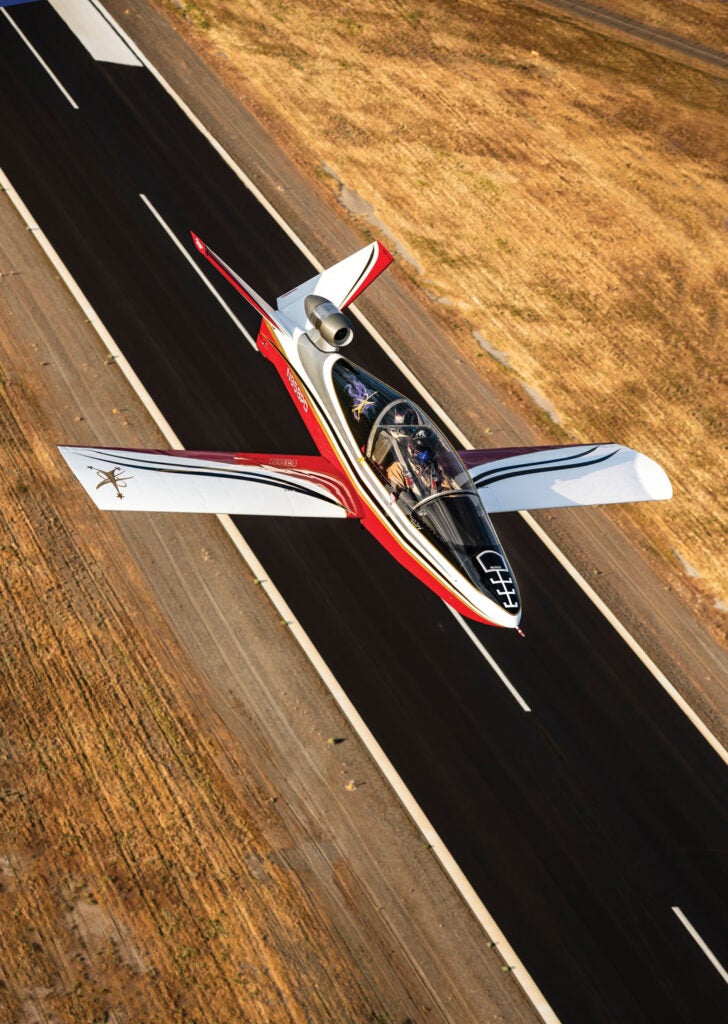 The jet was no different, except that in addition to the normal builder’s log, logbook with an initial inspection signoff, registration certificate and weight and balance documents, we also had to have an approved maintenance plan for both the airframe and the engine since it was a turbine powered machine. Fortunately, there is no need to generate these from scratch. The engine comes with an extremely complete maintenance manual from PBS Aerospace, and Sonex has already produced a maintenance plan that you can use as a template for your own jet.
The jet was no different, except that in addition to the normal builder’s log, logbook with an initial inspection signoff, registration certificate and weight and balance documents, we also had to have an approved maintenance plan for both the airframe and the engine since it was a turbine powered machine. Fortunately, there is no need to generate these from scratch. The engine comes with an extremely complete maintenance manual from PBS Aerospace, and Sonex has already produced a maintenance plan that you can use as a template for your own jet.
Having a good relationship with our local FSDO inspectors, they were aware of the jet project well in advance and eager to help get it licensed. In fact, the inspector assigned went above and beyond in trying to figure out a way to reduce the standard 40-hour Phase 1 timeframe. His theory was that since he had discovered certification paperwork for the engine in Europe, he wanted to give me a 25-hour Phase 1 time, but alas—neither of us could justify it because it didn’t have U.S. certification.
Nevertheless, he was more than accommodating in the size of my test area, 150 nm in radius, because of the need for longer runways than required for typical Experimental designs. Because of my location on the eastern fringes of Carson City, Nevada, that still only gave me about eight usable runways on my side of the Sierra Nevada—a formidable mountain range to cross in a new aircraft.
The inspection was scheduled and came and went with ease—we’d had numerous builders and A&Ps look over the project before the final day, and nothing was left to chance. In actual fact, the jet is so simple that there is very little to inspect. The control system is straightforward. The engine has just a couple electrical connectors and a fuel line. And the fuel system itself—well known as the Achilles’ heel of Experimental aircraft—is dirt simple. We quickly had the airworthiness certificate and operating limitations in hand and looked forward to the first flight.

First Flight
I’ve been involved in flight test operations my entire working life, and I don’t take them lightly—no matter how simple the airplane might be. The SubSonex is simple, but it is also small, and the takeoff speed is high because of the downward pitching moment of the top-mounted engine and the need to get lots of speed to make the ruddervators effective. With short little landing gear, that high speed (about 75 knots at rotation) seems pretty darn fast—it’s like a racing go-kart—and if something were to go wrong in the takeoff or landing roll, it could get ugly. Therefore, we set low wind limits with almost no crosswind allowed for the first couple of flights.
Because the aircraft’s retractable gear has a relatively low extension (and extended) speed, well below the best rate of climb speed, we did a risk trade about retracting it on the first flight. In the case of most retractable-gear aircraft, the wheels are usually left down on the first flight of a new type. Well, there had been about nine of these airplanes flown before mine, so we weren’t dealing with a complete unknown—and the fact that we were already at a density altitude of more than a mile made me reluctant to give up on climb—so we made a list of pros and cons and decided to raise the gear on the first flight—after extensive ground testing, of course.
In order to give myself a bit of help in the gear department, in case we were to have indication problems or questions on the gear’s position, I enlisted a chase plane flown by Bob Mills, a former Navy fighter pilot, current Reno racer and head of the formation flying organization in the U.S. In short, I could think of no one better to have on my wing in case something went wrong. I am used to working as part of a flight-test team, and we always say that a test pilot’s IQ drops by 50% when he releases the brakes on the first takeoff roll—so it’s good to have some qualified help.
We also put thought into a small ground team, one person to look over the entire operation and make sure we were following the weather and equipment rules, and another person to help make sure that I didn’t have to worry about the equipment—or anything else. All I had to do was get in and fly. Our weather rules were rigid, and they were not to be broken—even though our chase pilot and plane came from another airport. As it turned out, we didn’t have to worry; the weather was beautiful the day we were ready to go, and we walked quickly through our procedures until I was at the end of the runway, ready to roll.
“SubSonex 958PD, rolling for takeoff,” I announced as I rolled in 90% power, checked the gauges, then released the brakes and firewalled the throttle. With just 260 pounds of thrust, the jet does not leap forward like it’s coming off a catapult—but once it gets going, it continues to get going! The nosewheel steering was positive, and it wasn’t hard to keep it straight—after reminding myself I didn’t need any right (or left) rudder to counteract torque or P-factor. I had decided that 80 knots was a good number for rotation, based on my memories from my rating rides nearly four years earlier, and the jet popped off the ground with just a slight drop of the left wing because I had yet to develop a feel for the neutral point of the sidestick. We were up and climbing, the gear retraction was positive and the airplane felt good—until it was time to reduce pitch a bit.
It was then that I noticed the stick was pretty much all the way forward, and I was not getting any significant amount of pitch down. Reducing power, the first instinct when you feel a control issue, was a bad idea—the jet noses down with thrust, up with lack of it. So I pushed the throttle forward again and realized that one way to get the nose to drop would be to roll the airplane into a bank, reducing the vertical component of lift and letting the nose slice downward. I quickly found an attitude where the forces balanced out, and I could think a moment. This wasn’t a trim issue—the trim is just a spring bias on the stick. No, I didn’t have enough down elevator.
I could, however, generate down pitching moment with the gear, which adds drag below the centerline. So out came the gear, and things got better. Next on my list—flaps! With the flaps out, I had even more nose-down pitching moment, and I now had enough control to fly it around the patch and set up for a landing, which went well. It was a short flight, but there was no damage, and all we had to do was figure out what was wrong.
As it turned out, it was—as usual—a combination of things. While I had sufficient travel in the ruddervators when they were deflected by hand, the neutral point of the stick was too far forward to generate the force I needed to get them there when front-driving the system. The stick position was off because the pushrod was adjusted too long—but it was adjusted as short as it could go because of the length of the threaded portions of the assembly—the rod end bearings could only go on so far. Cutting off a little of the thread and shortening the pushrod brought the stick farther aft when the ruddervators were neutral, giving me more travel.
The other contributing factor was that the prototype jet had a simple bicycle grip on the short stick, whereas the production units came with a “fighter style” grip, which is much longer. In order to use this grip, the builder needs to cut about an inch and a half off of the metal stick—but this wasn’t noted anywhere on the plans. The fact that the resulting grip was longer than designed (coupled with the incorrect neutral point) meant that I was right up against the panel switches when I was pushing hard for full down. Oh well—this is what you find as an early adopter of a design, and it was something none of our inspections had caught before the flight—we fixed it and flew again a few days later. All was great, and we had full control of the jet.
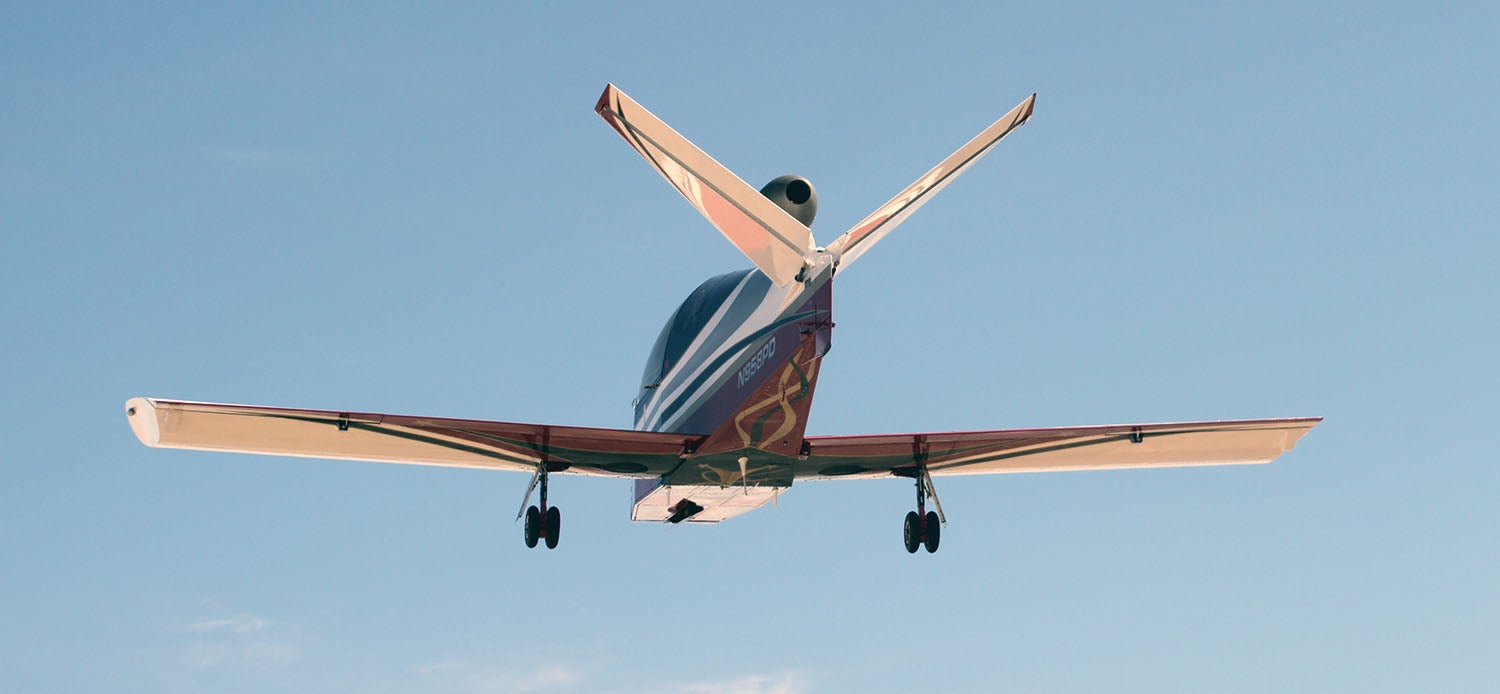
Two Greens
The third flight gave us our only other anomaly on the test program, and while at first I was afraid that we might be scuffing up the bottom of the beautiful paint job, further careful and step-by-step troubleshooting brought us down with no trouble.
The flight was intended to exercise gear and flaps, and exercise them we did. On about the third extension, I noted that instead of the usual “slam” of the nose gear coming down, I felt just the softer bang of the mains and got no green light for the nose. My chase plane simultaneously mentioned that it looked like the nose gear was hung up, with the gear door about 30° open.
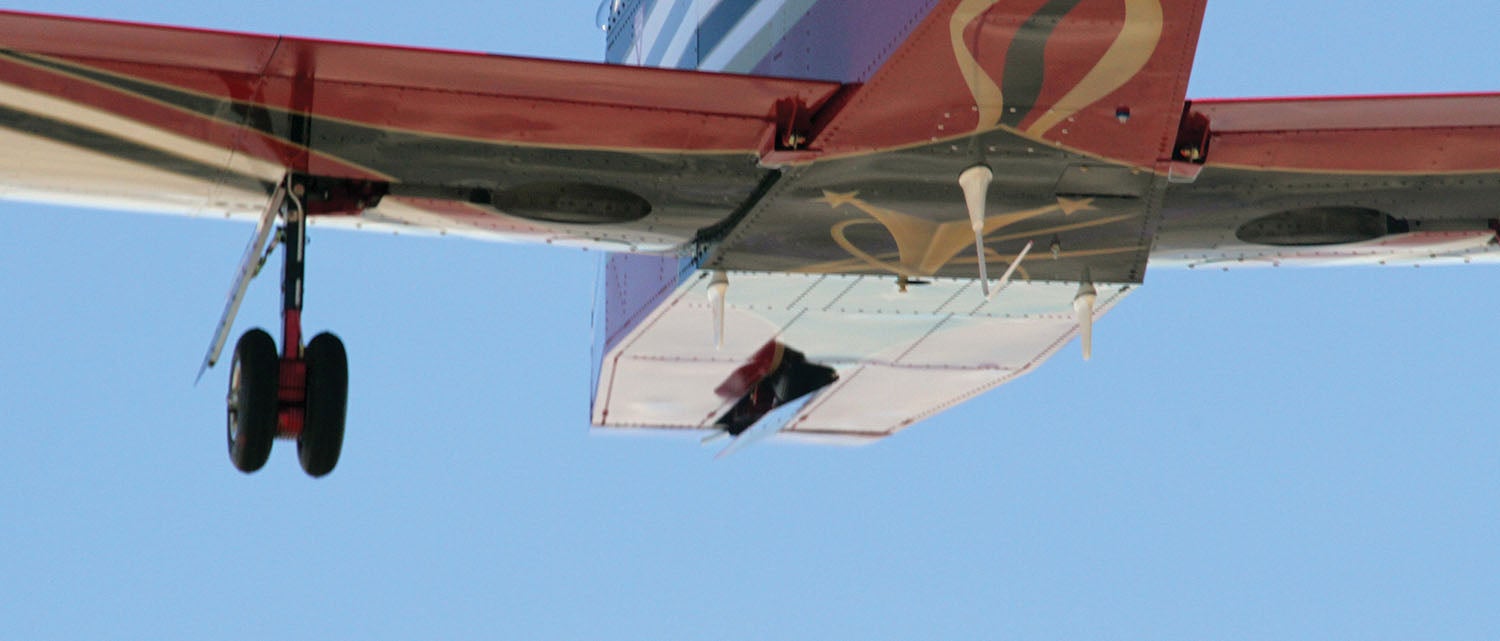
The gear on the SubSonex is pneumatic and pushes up and down with air pressures of between 90 and 110 psi. All three wheels will free fall if you lose air pressure—but the nose gear has to push the gear door open against a spring. The main gear doors are attached to the gear legs and offer no resistance. Because the nose gear has to have some air pressure to let it force its way down through the gear door, Sonex came up with a simple solution in case this didn’t happen—a replaceable Delrin skid under the nose cone, just forward of the gear well. If the nose gear doesn’t come down, you simply land on the mains and lower the nose to the pavement. Replace the skid and you’re on your way.
I didn’t really want to ding the paint on the skid on this, our third flight. However, we had an hour and a half of fuel and a great chase pilot who had been through a similar problem with the nose gear on his race plane a few months before. So we knew the drill. First, we decided not to cycle the gear again—the air pressure was low, and while it was climbing ever so slowly (indicating the pumps were trying to raise the pressure in the reservoir), it was clear they weren’t going to get the job done. The mains were down, and that’s what we really wanted, so we weren’t going to mess with the switch. After flying around for ten minutes watching the pressure fail to get to a level where it would lower the gear on its own, we tried the “G method” of building up speed, then pulling to see if the added weight of the gear would pop it down. Unfortunately, with the low gear-down speed, it was hard to generate enough G’s before the energy just bled away.
Our next trick was simple—with the door open about 30°, we felt that if we could side load it, that might be just enough to get it to go the rest of the way. It felt like it was right at a tipping point. How do you load a side-opening gear door? Blast some wind at it from the side! This was easy—a big boot of right rudder brought the relative wind in from the left and pushed the door…open! With a thunk, the gear was down, and we were back in our happy place.
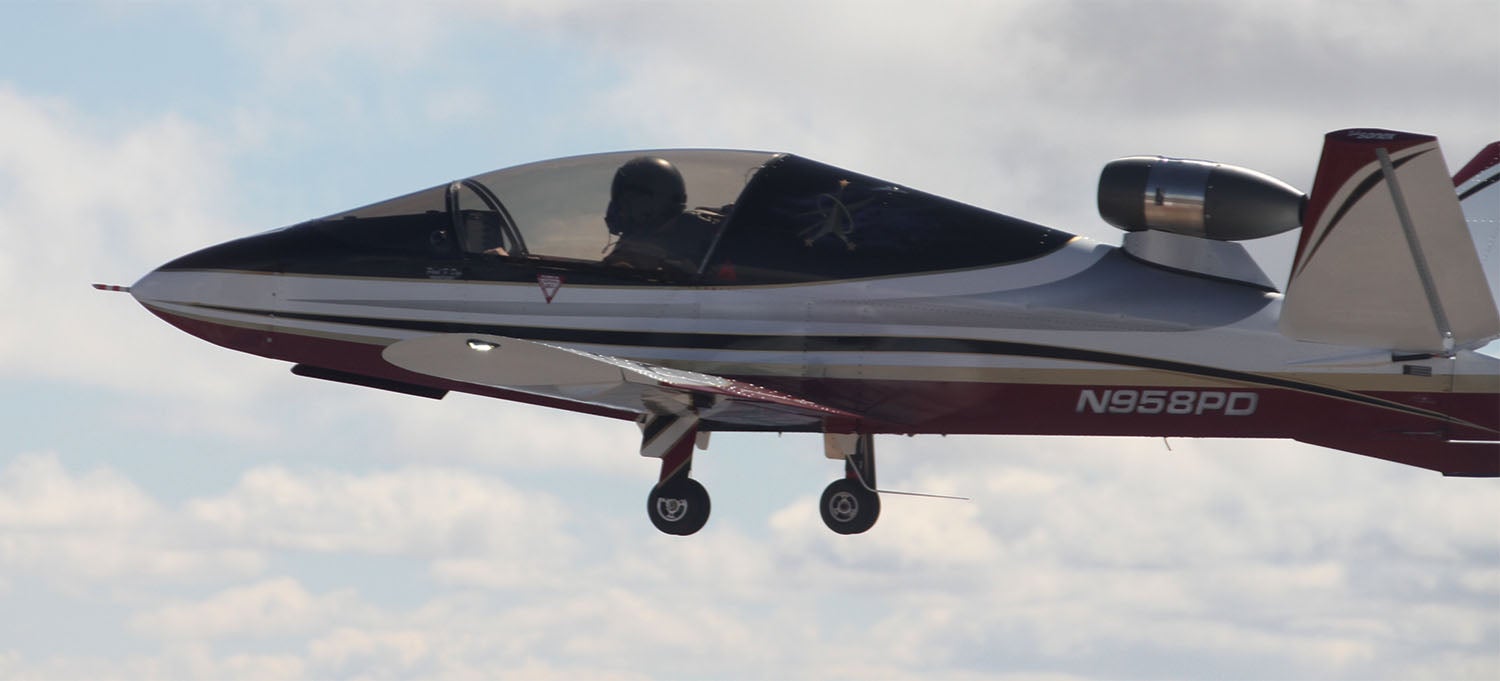
Inspection on the ground showed that the newly retrofitted air system (an upgrade from the prototype featuring ¼-inch lines in place of the original 1/8-inch tubing) used push-to-connect fittings common on air systems throughout the transportation and manufacturing industry. But in the very tiny nosewheel well of the SubSonex, the “down” hose had been in a position where it was lightly touched by the nosewheel on each retraction. This light touch cocked the fitting enough to back out the hose about a millimeter at a time—and on that flight, it reached the point where it leaked. The answer? Cocking the fitting ever so slightly to move the hose a little farther away from the tire and putting a piece of safety wire in the groove of the fitting so that it couldn’t be cocked and “released.” And we added a piece of colored tape around the tubing, right next to the fitting, so it is easy to do a visual inspection before each flight to see if it has backed out even a tiny bit. It didn’t in all the rest of the flight test hours.
Such is why we test—and test, and test. It’s also why we have backup plans and procedures for when things go wrong. Not “if” things go wrong—but when. Spending a life in flight test gives you that attitude.

A Solid Test Plan
About the time we started flying the jet, the EAA had finally published the new EAA Flight Test Manual and the associated FTM Test Cards. I had been part of the generation of this work and had used a draft version on my previous airplane’s test program to try it out, feeding changes back to the team creating the manual, along with some comments on overall philosophy. The finished manual is easy to read and understand, and the test cards lead a new builder-turned-test-pilot through the process of doing a solid job of testing their new airplane. Stability, control and performance—it’s all there and easy to do.
One of the nice things about the program is that, to a large extent, cards can be completed out of order. There are some that really need to be done first—but after that, you can carry several test cards on any flight. If the winds and weather don’t cooperate with your primary mission plan, you can do something else instead. This is how we did it in the space program; never waste a launch, even if you can’t get the primary objective.
In the jet, I worked my way through the initial flights to calibrate the airspeed system, test the basic systems and determine the critical speeds (VX, VY, VS, etc.). Then I moved on to basic stability stuff and performance testing, before getting into some of the more esoteric stability work and other things like takeoff and landing distance. Throughout the program, you are not just testing the airplane, but getting yourself used to flying the machine more precisely every time you go up. The primary purpose is testing the machine—but if the pilot improves in the process, there is nothing wrong with that. Consider it a bonus!
Eventually, it is hoped that the EAA FTM will be used by the FAA as an alternative means of compliance for signing an airplane out of Phase 1—the carrot to complete a full test program, rather than just “flying off the hours” as many like to say (and do). I am a big supporter of this, although I still expect that flying the full FTM will take most pilots somewhere between 30 and 40 hours anyway—at least if they are honest about it. The EAA and FAA are still in the early stages of pursuing this plan, but the right people seem to be motivated to make it work, so I expect that sooner or later it will be an option available to everyone—jet or no jet.
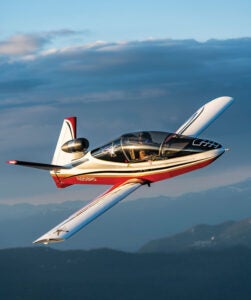
Let’s Have Some Fun!
Lest we descend too deeply into the esoterica of flight testing, phugoids and stability curves, let’s just remind ourselves why we bought the jet kit in the first place: Underlying any reasons that you might propose of practicality, the SubSonex is just plain fun!
I have read the opinions of those who declaim it as a slow jet with high fuel consumption and not a whole lot of range. Sure, they’re right—20 gallons of Jet A an hour to go about 220 knots for 250 miles—and then you’d best be on the ground, or you’re going to be a glider. Yup, that’s all true. So…show me your $130,000 personal jet that doesn’t break the bank every time you fuel it, or inspect it—or maintain it! No, it is not a traveling machine—but it was never intended to be. Neither is a Pietenpol or a Baby Ace or a Pitts, Eagle, or Extra.
The fact is, we buy and build these machines for the unique experiences they give us. Any of my RVs have better cross-country performance, economy and even better handling qualities than the jet. The jet is more than adequate in handling, but it is heavier in roll than in pitch, and yaw is lighter still. An RV or Kitfox is a much more harmonious beast. I can stuff that Kitfox into an incredibly short mountain strip, and I can fly my RV-3 all day long, comfortable in the contoured cockpit with full IFR capability—and then fly aerobatics with it when I get to my destination.
But none of those other airplanes burn Jet A, smell of kerosene, and make that smooth whooshing sound when you push the throttle forward. None of them have zero vibration from the power-making machinery. And none of them draw a crowd at the fuel pump like the SubSonex.
Flying the SubSonex concentrates the mind. You know when you start the engine that you have two hours to dry tanks—at the most. You need to get to the runway and be ready to go when you are at the hold-short line. Takeoff is easy, and the most remarkable thing about climb is that you worry about nothing but looking out for traffic and keeping to your climb schedule. There are no CHTs to monitor, no oil temp to worry over. There’s no mixture knob to play with—just look outside for traffic and get yourself some altitude! (Don’t look at the fuel flow, by the way…it’ll sort itself out when you reach cruise.)
We’ve flown the little jet in mild aerobatics, and it’s good at simple rolls, loops and combinations of the two. It’s not something you are going to snap roll or pull eight G’s with in a tumble. I tend to plan my trajectory far in advance, much further in advance than I do in an RV, where I might change my mind in the middle of a loop and turn it into an Immelmann. Plan ahead, fly the plan—and enjoy the smooth ride.
As I mentioned above, the rudders are fairly light, but you can add a lot of slip without much force, and the airplane feels plenty stable. Pitch is about what you’d expect, but will vary a bit with CG—the farther aft, the lighter it will be. And by the way, the CG range is just a few inches, but that’s OK—the only variable is fuel—and what you had for dinner the night before. Roll is the heaviest of the axes because of the short stick and the nature of controlling with just your wrist. Also, because of the nature of the Y-tail, you can easily have a bit of a heavy wing if you don’t have the rudder exactly centered—so if you find your wrist getting tired from holding a wing up, talk to your feet.
The airplane stalls straight ahead, at an indicated airspeed of 52 knots with flaps and gear out. Really, it’s just about like most of the RV fleet in that regard. It bleeds off energy quickly in turns, and because the engine takes time to spool up, you need to plan ahead if you want to add energy to the equation and keep a steep turn going.
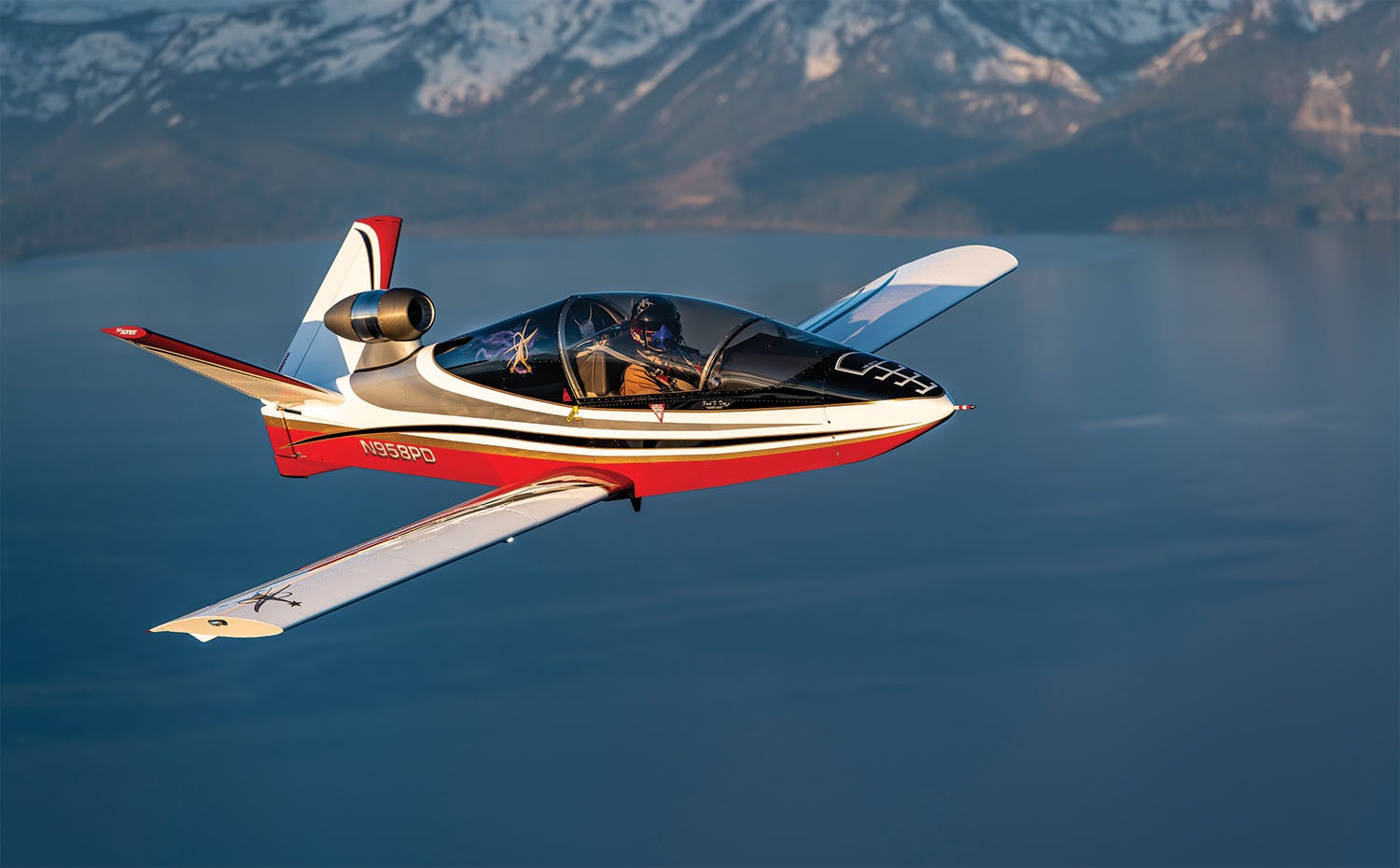
A Few Oddities
Probably the biggest thing that piston pilots need to learn in the jet is that engine response lag. In propeller aircraft, you push the throttle forward and get almost instant response. In a turbojet, the engine sees the addition of the throttle as a request: Yes pilot, I have your request, and I’m thinking about it. I might go out for coffee for a bit, and I’ll think about giving you more thrust when I get back…
In actuality, it takes only a few seconds to get additional power, but those few seconds can be crucial if you are low on approach and need to add some energy right now. In fact—you can’t—unless you have been flying above the glide slope and keeping extra speed. Remember, energy bleeds off quickly, so you can easily find yourself on the back side of the power curve with the nose coming up, the runway headed farther from reach and a helpless feeling as you sink into the approach lights.
Plan ahead, even in the pattern. I like to have the gear down before I enter downwind—but that means I have to be at pattern altitude and below 108 knots before I get there. It can take some doing with such a slippery airframe. You’ll probably be sliding into the pattern altitude with the throttle at idle and slowly decelerating to that magic 108. Then as soon as you get the gear out, you need to add power to the tune of about 85% in order to stop the deceleration and achieve a comfortable 95 knots on downwind. Next come the flaps—put them out abeam the numbers and increase the throttle to about 90% because you have the downwind-to-base turn coming up, and you will bleed off airspeed in that 90 degrees. To repeat myself—plan ahead!
The other thing you have to get used to is the significant pitch down that comes with the addition of power—and the pitch up that comes with power reduction. This is something you get used to quickly under normal flight conditions, but if you find yourself low on approach and asking for a lot of power, expect the nose to head down just when you’d like it to be headed up. Anticipate, anticipate, anticipate!
None of this is meant to scare anyone or hint that only “superior” pilots can fly the SubSonex—they are simply characteristics that are different than what most pilots have experienced with typical sport planes and something new to be learned. So long as you plan ahead, keep some energy in reserve and stay ahead of the game, you’ll be fine.
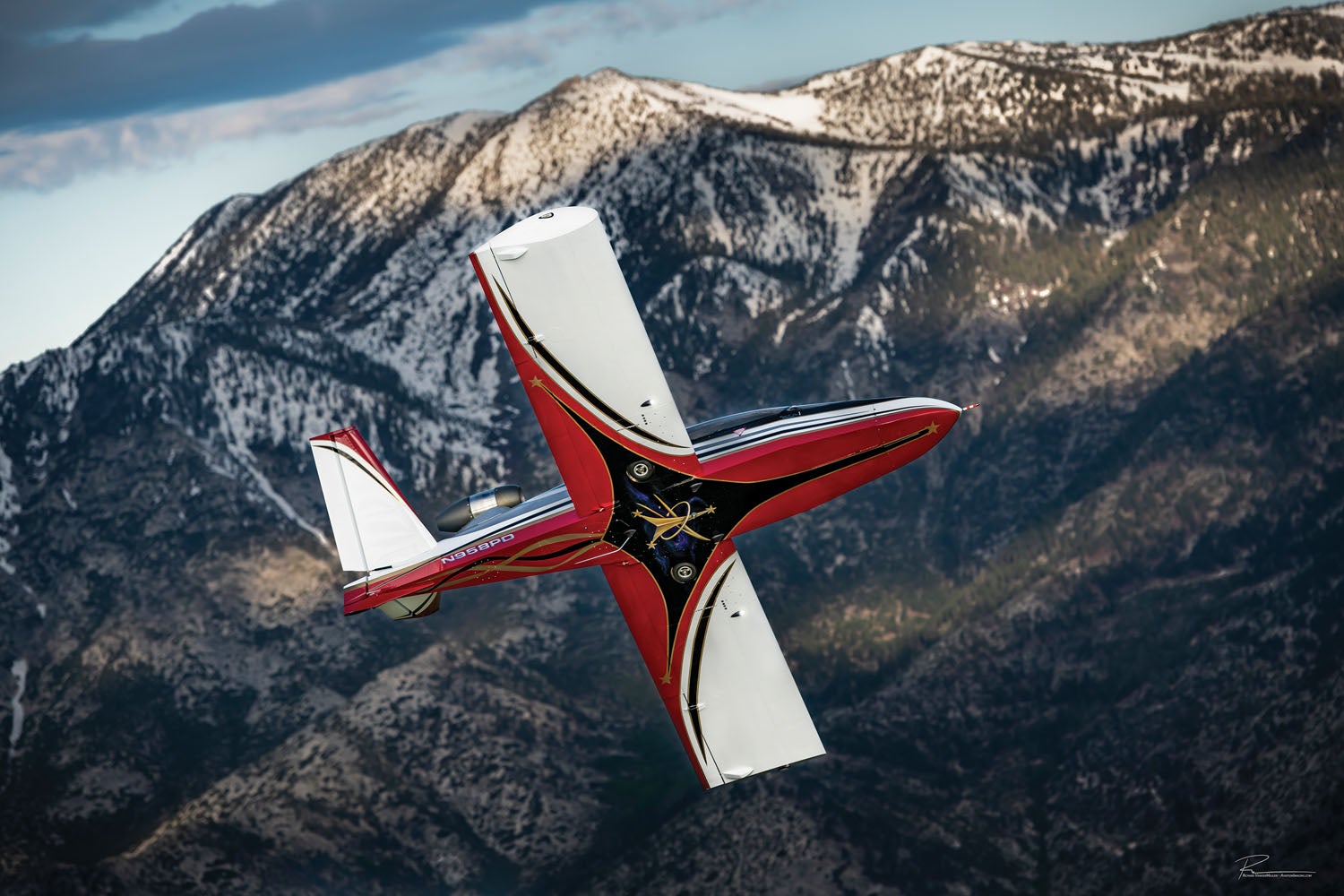
So Do You Really Want One?
The SubSonex is really a great big toy for those who want to experience the smooth power of a jet engine but can’t afford to feed and care for an L-39. No, it’s not going to go anywhere near as fast or as high, and yes, it burns a lot of fuel (but not as much as the L-39) and you can go faster in a Lancair on less fuel burn. But that doesn’t change the fact that you have a kerosene burner and get to experience some unique flying because of that.
I have logged PIC time in over 130 different types of aircraft, and with a few exceptions each one of them has been fun—but each in its own way. I love airplanes, no matter what they are designed to do. Low, slow, fast, high—with propellers or turbines—or no power at all! You can look down on others that don’t enjoy the same type of airplane that you do, or you can recognize that each aircraft has its own charms and look for them as a unique experience.
The SubSonex is impractical in many ways, but it scratches an itch that many pilots have—it goes whoosh and flies smooth—and brings a smile to your face every time you fly it. It’s not for everyone. But neither is a Pietenpol—and there are lots of Piet lovers out there as well. If the sound of jet noise is for you, then the SubSonex is something to consider. Just remember—you can cut the last couple of inches off of any toothbrush, and it will clean your teeth just as well.
It’s worth it if you want to fly a jet.
In the video below, Paul Dye takes us on a flight in the SubSonex jet:
Photos: Richard VanderMeulen and Louise Hose

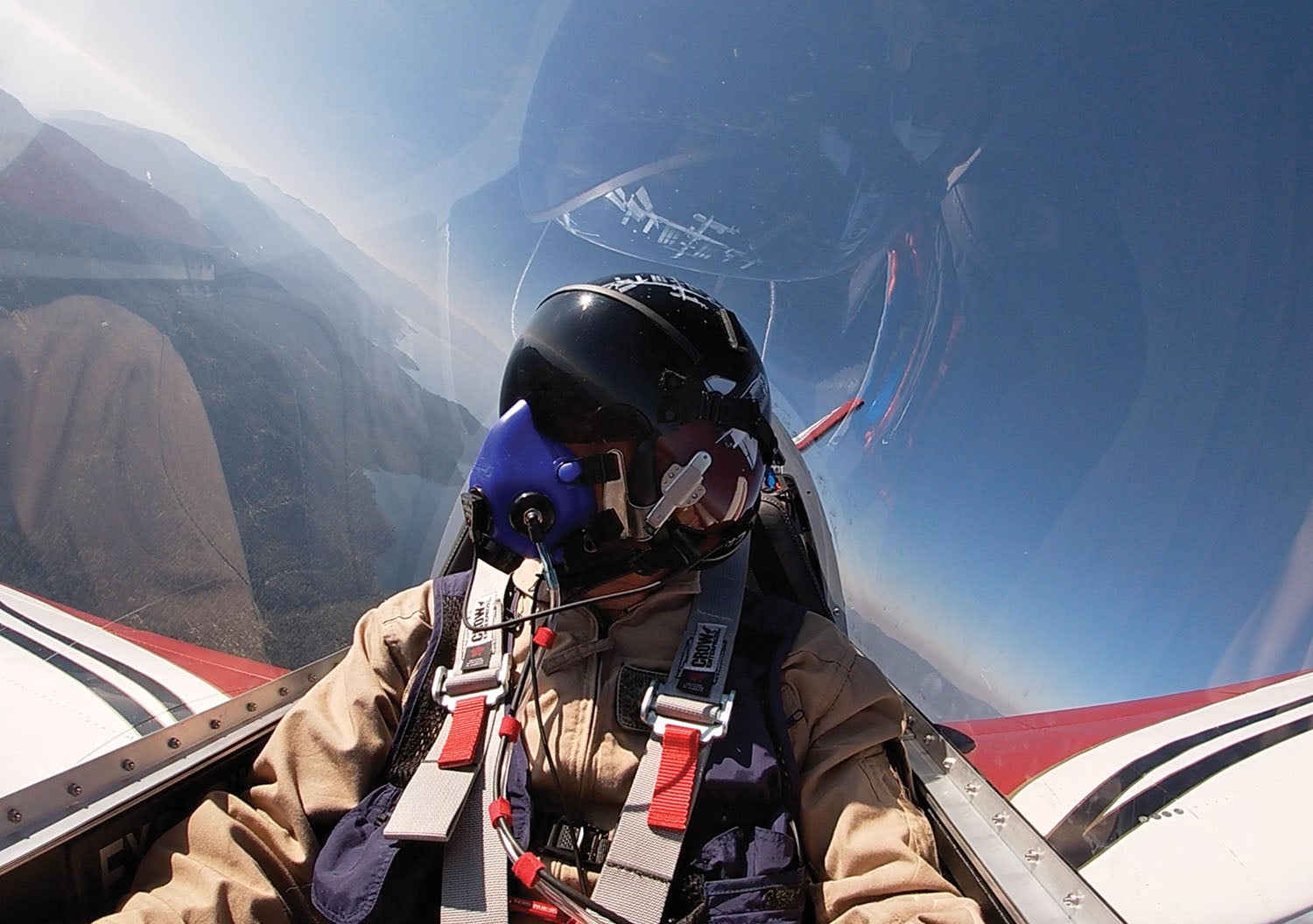


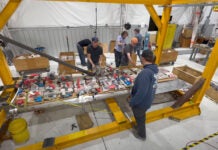









Paul, thanks for the ride! Hope all is well.
Paul, what a wonderful series you’ve written and documented on your beautiful SubSonex. Thanks for sharing this with us and a job well done! I’m dreaming about the two-seat JSX-2T as I write this.
Nice job, Paul and Louise!
I liked the articles on this aircraft as this is “cheap kerosene dreams”. Sadly still more than I can afford. Any thoughts on adding a speed brake?
I have heard that John Monnett was thinking about a speed brake design, but don’t know how far he has gotten.
Very excellent article. Really enjoyed it and the flight as well.
Enjoyed the video, Paul.
EXCELLENT ARTICLE FROM A TEST FLIGHT PRO! I especially appreciate your thinking processes during “irregular” occurrences during the test process. I personally have test-flown 13 different homebuilts, and only ONE 1st flight went without difficulties, the Christen Eagle that I now own. And it had two situations late in its test phase that would give anyone pause. While doing the initial inverted flat spin testing, I had the cockpit suddenly fill up with smoke. BLUE smoke, –oil. No sweat, something was leaking onto the exhaust pipes. Declared an emergency anyway, watching oil press all the time, and landed. Entire BELLY AND INTERIOR SKIN was covered in oil. Prop governor had decided to loosen up just as I got 2 1/2 turns into the inverted flat spin.
Then ten hours later, coming in for a landing at Auburn, CA, (a sway-backed shortish mountain strip surrounded by tall pines, when I came up with a little power to complete downwind, I had no throttle response. Too much power to land, not enough to go around or divert anywhere. I had to control power with the mag switches. The builder had assembled the throttle control with a castellated nut as proper, but had forgotten to put the cotter pin in. The throttle control came apart, just at the worst possible time. I was about 30 hours into the test program at that point, and was very happy with the plane at that time. Certainly wasn’t expecting that kind of problem, under those very tight circumstances..
Point is as you said. Test flying is NEVER to be taken for granted, and always planned for mentally. The best homebuilt i have ever flown, —–THREE TIMES it has caused me dirty pants. In the first hundred hours. All the others have had initial flight problems. one extremely serious. A warped wing that NO ONE caught before the test, and which flight was forced about three weeks before the plane was going to be ready to fly. I was doing a high-speed taxi test only, just getting the tail up was all that was planned, when a Super King Air pulled out onto the opposite end of the runway, and started his takeoff. I HAD to fly, and the plane was just barely controllable.. With an unreliable Volkswagen engine. The owner eventually took a chain saw to that plane.
Test flying is NEVER to be taken lightly, or without extensive help. I fully endorse and appreciate everything you said in this article, and hope others pay attention.